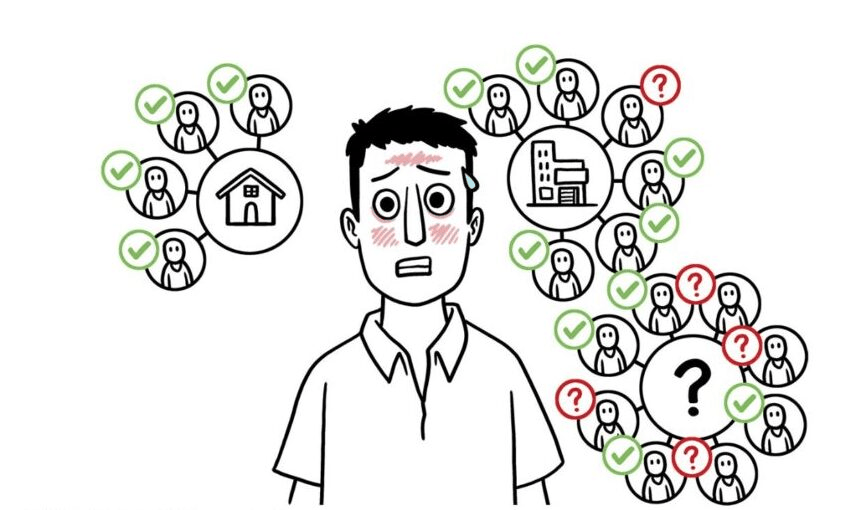As we await a decision on moving out of alert level four, some big questions are in play. One of those is about contact tracing, explains Siouxsie Wiles. Illustrations and animations by Toby Morris.
This work is made possible thanks to Spinoff Members. Help us to continue this work by joining here.
On Monday, the prime minister is set to announce whether Aotearoa New Zealand will soon move from alert level four to level three. From lockdown, as some have put it, to “lockdown lite”. Jacinda Ardern has made it really clear that the decision will be based on being confident we won’t lose the gains we’ve made getting Covid-19 under control.
Because that’s exactly what we’ve done. Our “go hard, go early” approach means we are on track to eliminate the virus. As I write this the number of new daily cases has dropped into single digits.
So how will the government know that we are ready to move levels? Well, I imagine lots of different things are factoring into their decision making. But here are two that are absolutely crucial.
How many people might still be incubating the virus?
One of the deciding factors is likely to be how the number of actual daily cases is tracking compared to the modelling predictions. That will give them some idea of how many people could be expected to have the virus but not know it when we come out of lockdown. This number is important because of how cases can so easily grow exponentially.
Remember, people are infectious for a couple of days before they have symptoms and the first few days they are unwell. That means each person with the virus can start off a chain of transmission that can grow exponentially. And because it can be two to 10 days before people start to show symptoms, it could take a few weeks before we start to realise those chains are happening. And then – potentially – we may have to go in to lockdown again to get them back under control.
What’s our ability to do contact tracing swiftly?
The other big thing that will determine our ability to rapidly move down the levels is how quickly we can identify and isolate anyone found to have Covid-19. That’s how we break the chains of transmission when we aren’t all in lockdown. It’s what contact tracing is all about.
Contact tracers are teams of people who interview anyone confirmed or suspected of having the virus to find out who they have been in contact with since their symptoms started and for the two days before. So, anyone they live with, work with, or have spent significant amounts of time with. Like people they’ve been out to dinner with, or been partying with, or played sports with. Those people may have been infected themselves, so they’ll be put into self-isolation to ensure they don’t pass on the virus to anyone else. If they do develop symptoms, they’ll be tested and if they weren’t caught fast enough then the process starts again.
Because of how quickly the virus can spread contact tracing needs to be fast, efficient, and effective. When we’re all in our bubbles in lockdown, contact tracing is relatively easy because most of us won’t have been in contact with many people. But the further down the levels we move, the more contact we have with other people, the harder contact tracing becomes and the more likely the virus will be to spread. That’s why for many of us level three will still feel a lot like level four. By sticking in our bubbles and staying home, we’ll be helping limit any last transmission chains that might exist.
There is lots of talk of how we can use technology to speed up the contact tracing process. Many countries are rolling out apps with varying degrees of success and concerns about privacy. It’s worth noting that for many of these to be successful they require enough people to have smartphones and to have downloaded and be using the app. And even Singapore has struggled with this.
Its worth remembering the goal here: to eliminate the virus and get back to alert level one. The more seriously we take level three, the more we stick to the rules rather than try to bend them, the quicker we’ll achieve our goal.
With thanks to Ayesha Verrall. First animation is based on an image by Trevor Bedford.
